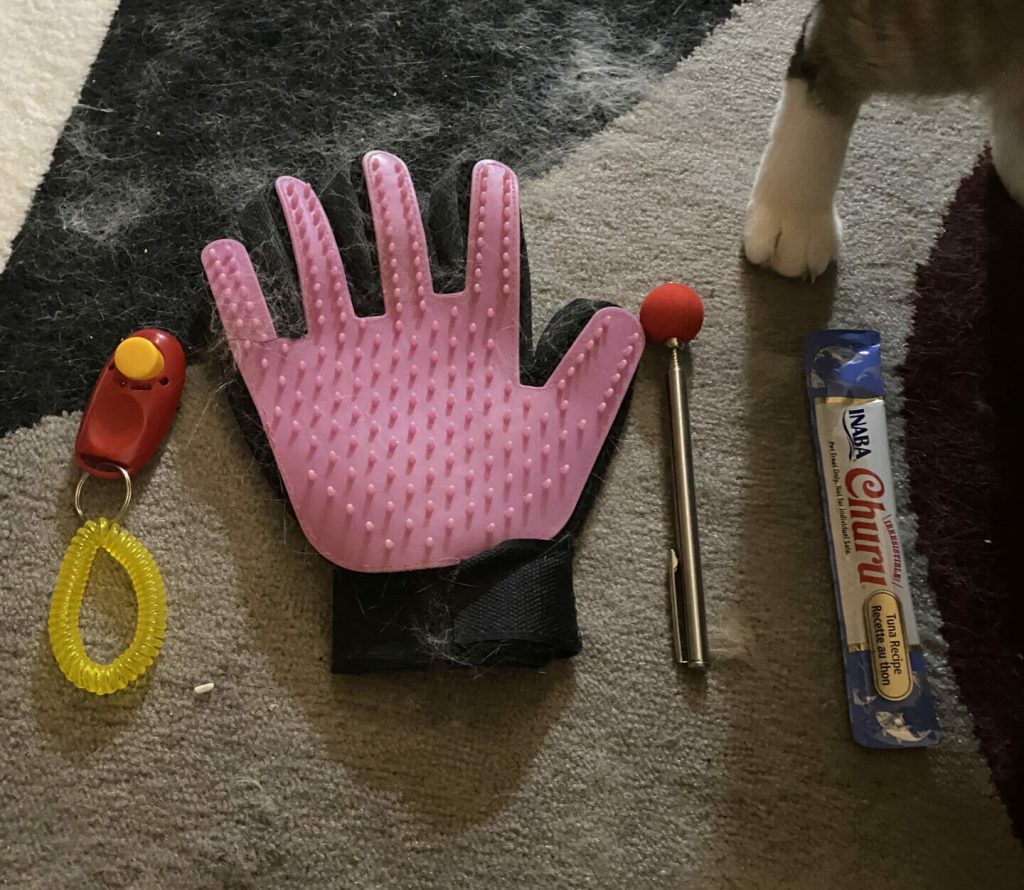How to Train Cats: Effective Techniques to Teach Desired Behaviors

Understanding Your Cat’s Training Potential
Many pet owners often underestimate the full spectrum of capabilities that cats possess. Training a cat may appear to require more patience than training a dog, but it is important to recognize that our feline friends are intelligent creatures, capable of learning through adaptation. With the application of dedicated techniques and an understanding of your cat’s natural behavior, you can teach them a wide variety of desired behaviors, leading to a fulfilling companionship that enhances both of your lives.
Effective communication with your cat is fundamental to successful training. Different from dogs, cats have unique responses and behaviors that align with their evolutionary traits, making it essential to tailor your approach. Here are some key strategies to consider:
- Positive Reinforcement: Rewarding desirable behaviors with small treats, verbal praise, or affection creates a positive association. For instance, if your cat sits on command, offering a tasty treat right afterward reinforces that behavior, encouraging your feline to repeat it in the future.
- Clicker Training: This method involves using a clicker, a small handheld device that emits a distinct sound, to mark good behavior instantly. For example, when your cat successfully uses a designated scratching post, click the clicker at the moment they scratch it, followed by a reward. This method allows your cat to associate the click sound with positive reinforcement, which can be very effective in teaching tricks or commands.
- Consistency: Routine is crucial in training. Establishing regular times for training sessions, feeding, and play can help your cat understand expectations. For example, if your cat learns to come when called after a series of daily training, maintaining that schedule will help solidify their understanding.
Studies indicate that consistent training not only fosters desirable behaviors but also significantly reduces common feline behavioral issues, such as scratching furniture or litter box problems, which can lead to a more harmonious home. With patience, understanding, and the right resources, you can successfully mold your cat into a well-behaved companion.
But what does the future hold for feline training techniques? As we further explore the captivating world of cat training, we will uncover additional methods and philosophies that can enhance your ability to connect with your furry friend. By unlocking these secrets, you will be on the path to nurturing a better relationship with your cat, filled with mutual respect and understanding. Are you ready to delve into the exciting possibilities that await?
DISCOVER MORE: Click here to learn about the benefits of pet adoption services

Mastering Cat Training Techniques
Training a cat can seem like a daunting task, but it is entirely within reach when you employ the right techniques and mindset. Understanding that every cat is unique is crucial. Their individual personalities, temperaments, and learning speeds can vary widely, which means that what works for one cat may not work for another. But fear not! With information and practical tools at your disposal, you can transform your feline friend into a well-mannered companion.
To start on this journey, it’s essential to set realistic expectations. Cats may not respond as immediately as dogs, but they do possess cognitive abilities that allow them to learn commands and tricks. Here are several effective techniques to incorporate into your training regimen:
- Understanding Body Language: Cats communicate significantly through their body language. Paying attention to cues such as tail position, ear orientation, and general posture can give you insights into their feelings. For instance, a cat with a raised tail is typically receptive, while a cat with flattened ears may be feeling threatened or irritated. Recognizing these signals can help you time your training effectively, maximizing the potential for success.
- Short Training Sessions: Cats have short attention spans. It’s best to keep training sessions brief—about five to ten minutes at a time. This avoids overwhelming your cat and keeps the experience enjoyable. Frequent, short sessions not only help maintain your cat’s interest but also allow for consistent practice, which is essential for learning.
- Motivation Matters: Just as humans have different motivators, so do cats. Some may respond best to food rewards, while others may be more motivated by play. Observing what gets your cat excited can be a game changer for training. Use their favorite treats or engaging toys during training to encourage them to participate actively.
- Patience is Key: Like any learning process, patience is vital. Cats will occasionally show indifference or may seem to ignore training sessions altogether. This behavior can be frustrating, but it’s crucial to remain calm and composed. If your cat isn’t responding as you wish, it might be necessary to reassess your approach or take a break before trying again.
Incorporating these techniques into your training approach not only improves your chances for success but also aids in strengthening the bond between you and your cat. As you begin to recognize the nuances of your cat’s behavior, a new world of possibilities emerges; you’ll find that training can be both a critical aspect of responsible pet ownership and an enjoyable part of your daily routine.
Once you establish a foundation with these basic techniques, we can delve deeper into more specialized training tactics that can address specific behavioral issues or even advance your cat’s learning capabilities. By expanding your knowledge and toolset, you can further enhance your relationship with your feline companion, creating a harmonious living environment that benefits both of you.
| Training Technique | Advantages |
|---|---|
| Clicker Training | Utilizes positive reinforcement, making it easy for cats to associate a specific sound with rewards. |
| Lure and Reward | Encourages desired behavior by guiding the cat toward specific actions with treats, enhancing engagement. |
| Target Training | Helps cats learn commands and follow directions by focusing their attention on a target, increasing their responsiveness. |
| Click and Treat | This method effectively reinforces good behavior, making training sessions fun and motivating for your cat. |
In your cat training journey, it’s essential to explore these effective techniques that not only facilitate desired behaviors but also strengthen the bond between you and your feline friend. Techniques such as Clicker Training leverage the power of positive reinforcement, allowing cats to create a strong association between actions and rewards. The Lure and Reward approach incorporates treats, maximizing engagement and ensuring that your cat remains interested throughout the training process.Additionally, Target Training introduces a sense of focus, guiding your cat to follow commands with consistency. For impactful learning, the Click and Treat method effectively combines a sound cue with immediate rewards, creating an enjoyable training environment. Explore these methods to uncover new insights into feline behavior, paving the way for a harmonious relationship with your cat.
DIVE DEEPER: Click here to discover safe interaction techniques for your pet
Advanced Training Techniques for Cats
Once you’ve mastered the foundational techniques of cat training, you’re ready to explore more advanced methods that cater to specific behaviors and skills. As a cat owner, your goal is to nurture a healthy relationship with your furry companion, and training can be a vital aspect of achieving that. By building on the basics, you can address common behavioral issues and even teach impressive tricks. Here are several advanced techniques that can elevate your training sessions:
- Clicker Training: Clicker training is a popular method that uses a small handheld device that emits a distinct sound (the click) to mark desired behaviors. When used in conjunction with treats, the clicker helps cats associate the sound with positive reinforcement. Start by clicking the device immediately after your cat performs a desired behavior, then follow up with a treat. Over time, your cat will learn to associate the click with positive outcomes, which can be a powerful motivator for learning new commands and tricks.
- Target Training: This technique involves teaching your cat to touch a target—like a stick or your hand—with its nose or paw. Once your cat understands the concept, you can use this skill to guide them through a variety of tricks or behaviors, such as jumping through hoops or going to their designated spot. Target training is especially beneficial for helping your cat learn more complex commands and can deepen your bond with them in the process.
- Desensitization Techniques: Cats can be notoriously skittish and sensitive to changes in their environment. If your cat displays fear or anxiety towards specific stimuli (such as loud noises, new people, or even other pets), desensitization is a useful training approach. Gradually expose your cat to the source of their fear in controlled settings, rewarding them with treats and praise for remaining calm. Over time, this can help your cat become more comfortable and confident in their surroundings, reducing anxiety-related behaviors.
- Behavior Adjustment Techniques: Some behavioral issues, such as scratching furniture or excessive meowing, require tailored approaches. For instance, providing a variety of scratching posts and encouraging their use with catnip or praise can help redirect your cat’s scratching instincts away from your furniture. For vocal cats, ensure they are receiving enough mental and physical stimulation. Engaging them in interactive play sessions or puzzle toys can keep them entertained, reducing unnecessary vocalizations.
- Socialization Training: If you have a multi-pet household or plan to introduce your cat to new people or animals, socialization training is paramount. Gradually introduce your cat to new experiences, ensuring you always monitor their comfort levels. Use treats and affection to reinforce positive behaviors during introductions, helping your cat to develop confidence and reduce the likelihood of fear-based reactions.
By incorporating these advanced training techniques into your routine, you can facilitate a more harmonious relationship with your cat while simultaneously teaching them desired behaviors. The key is to remain adaptable; what works wonders for one pet may not resonate with another. Experiment and adjust your methods based on your cat’s responses. Whether you’re tackling behavioral issues or teaching tricks, a commitment to ongoing learning about your cat’s unique needs will ultimately lead to a more fulfilling companionship.
LEARN MORE: Click here to discover the importance of balanced nutrition
Conclusion
In understanding how to train cats, it becomes evident that patience, consistency, and positive reinforcement are pivotal in nurturing a well-behaved feline companion. Effective techniques like clicker training, target training, and desensitization are not merely methods; they are bridges that enhance the connection between you and your cat. As demonstrated, the training process can address a variety of concerns, from behavioral issues like scratching and excessive meowing to teaching impressive tricks that can entertain and engage both you and your cat.
Ultimately, every cat is unique, and the key is to observe and adapt your training methods to suit their personality and comfort level. By investing time and effort into training, you aren’t just instilling desirable behaviors; you are fostering trust, understanding, and affection with your pet. Consider diversifying your approach; incorporating elements such as behavior adjustment and socialization can lead to a more harmonious household, especially in multi-pet environments.
Remember, the journey of training your cat is as rewarding as the results it yields. It’s an opportunity to bond, learn, and grow together. As you explore different strategies, don’t hesitate to seek out resources, engage with fellow cat owners, and refine your approach. A well-trained cat not only enhances your living space but contributes to a happier and healthier feline life.


